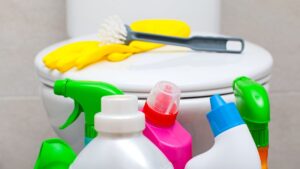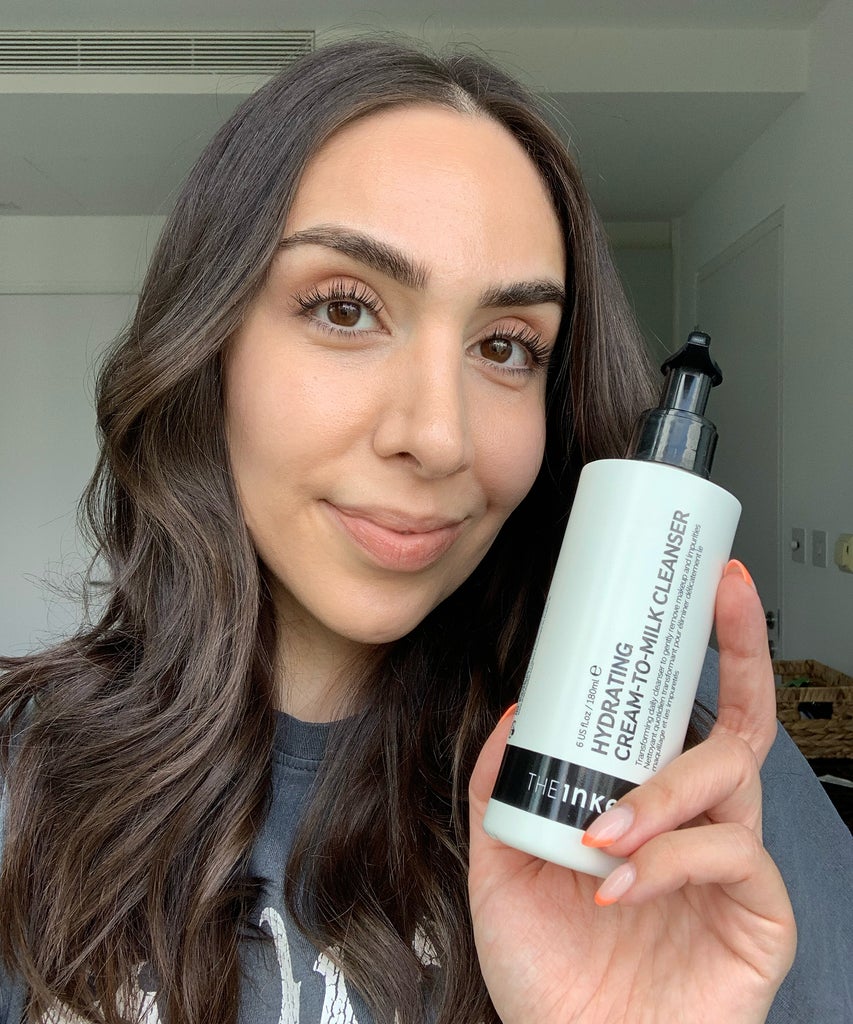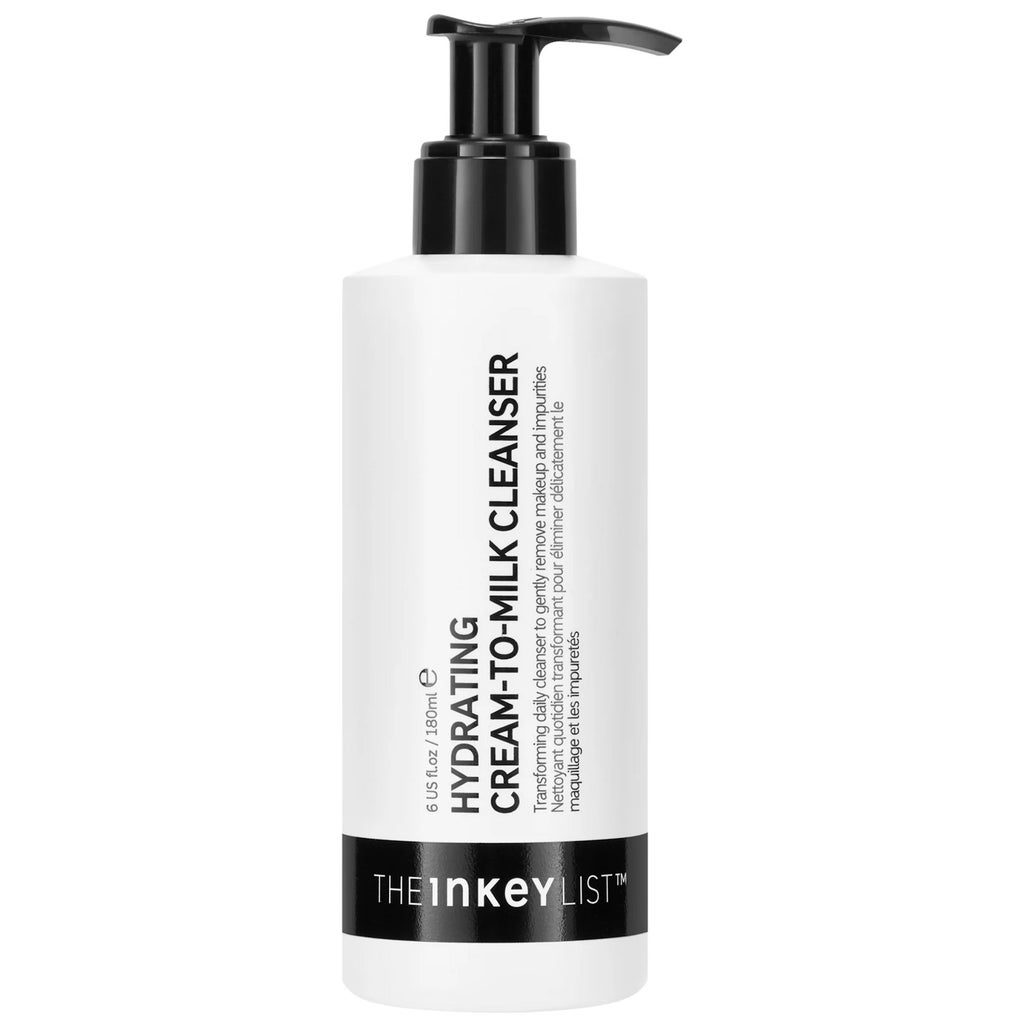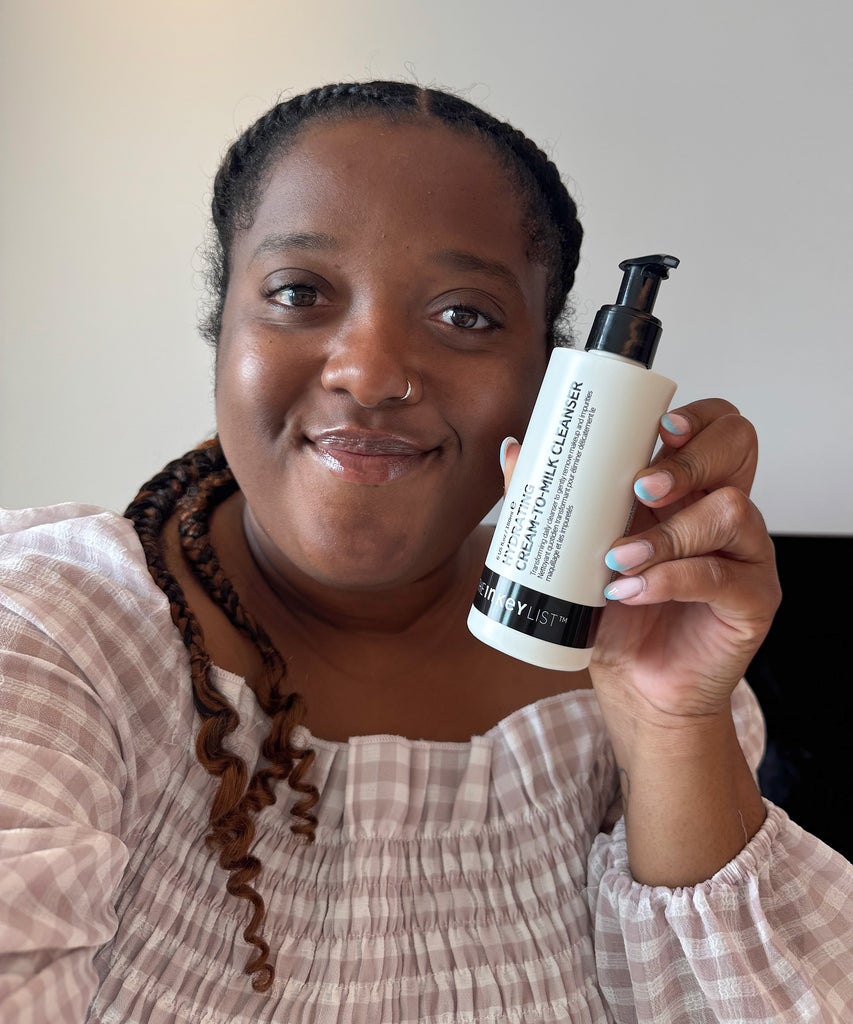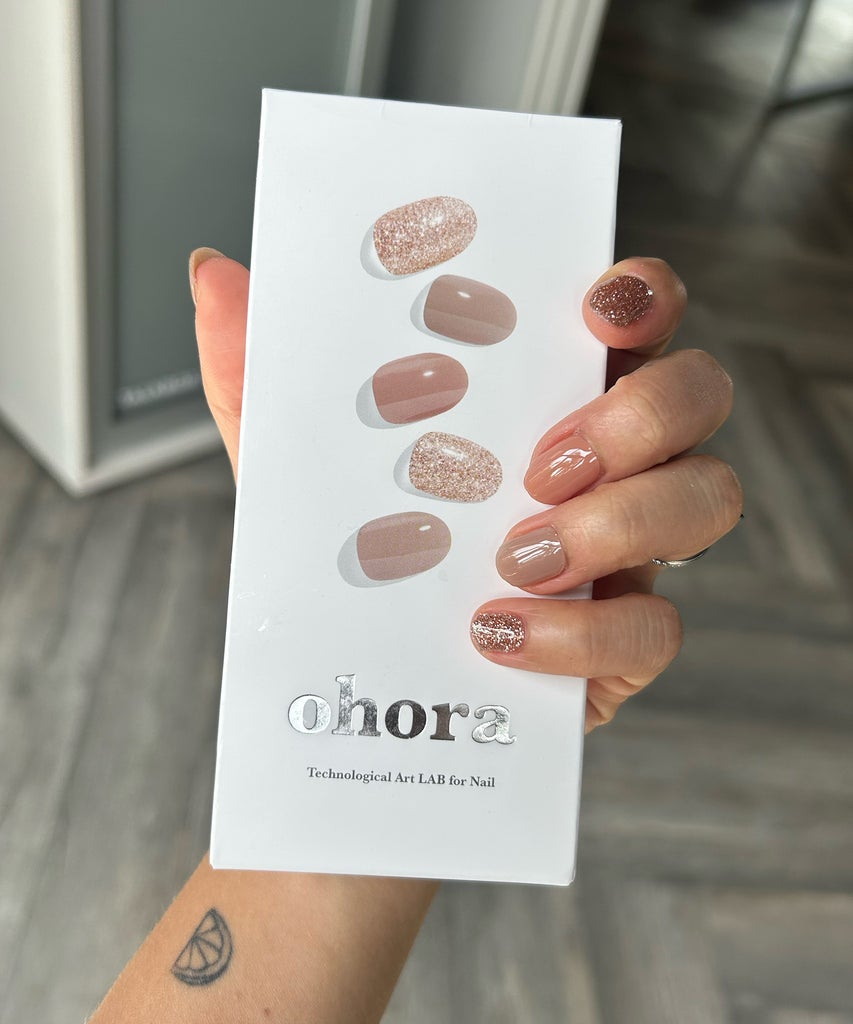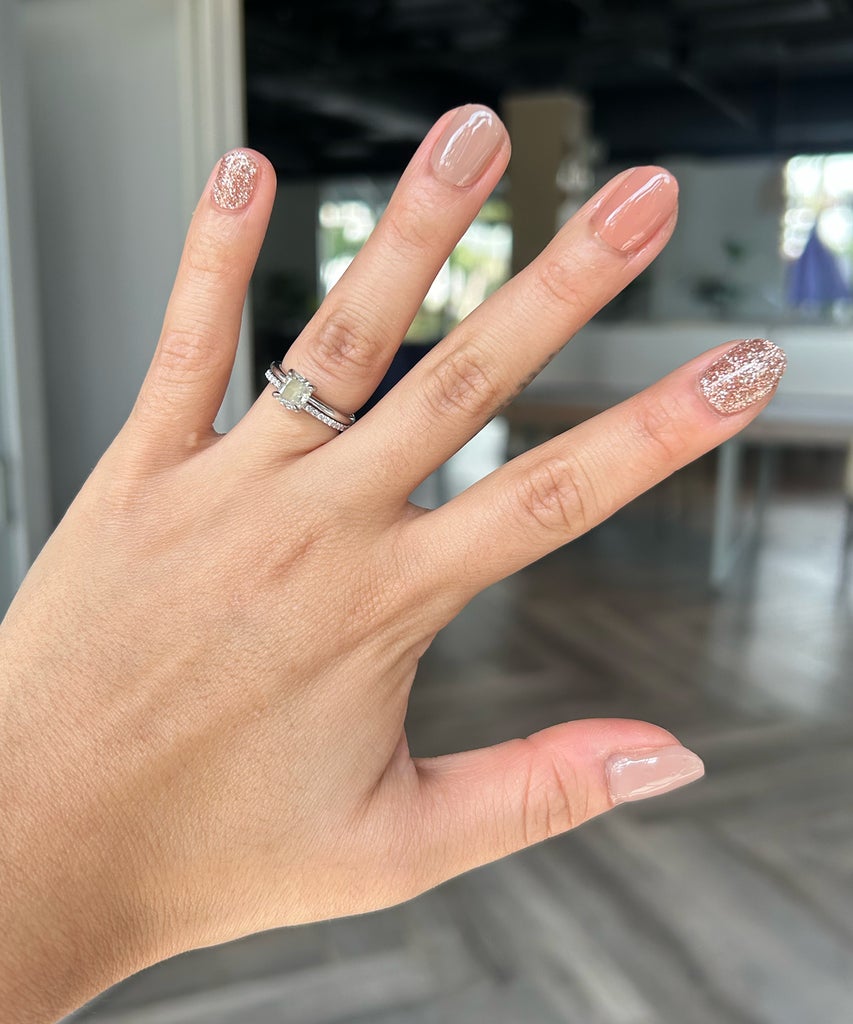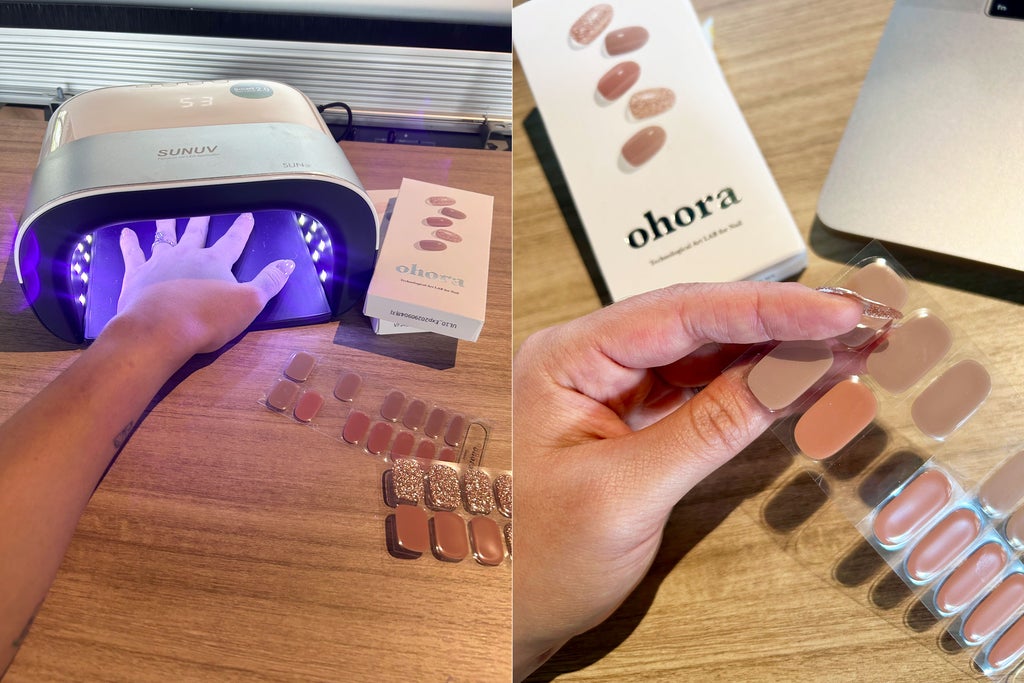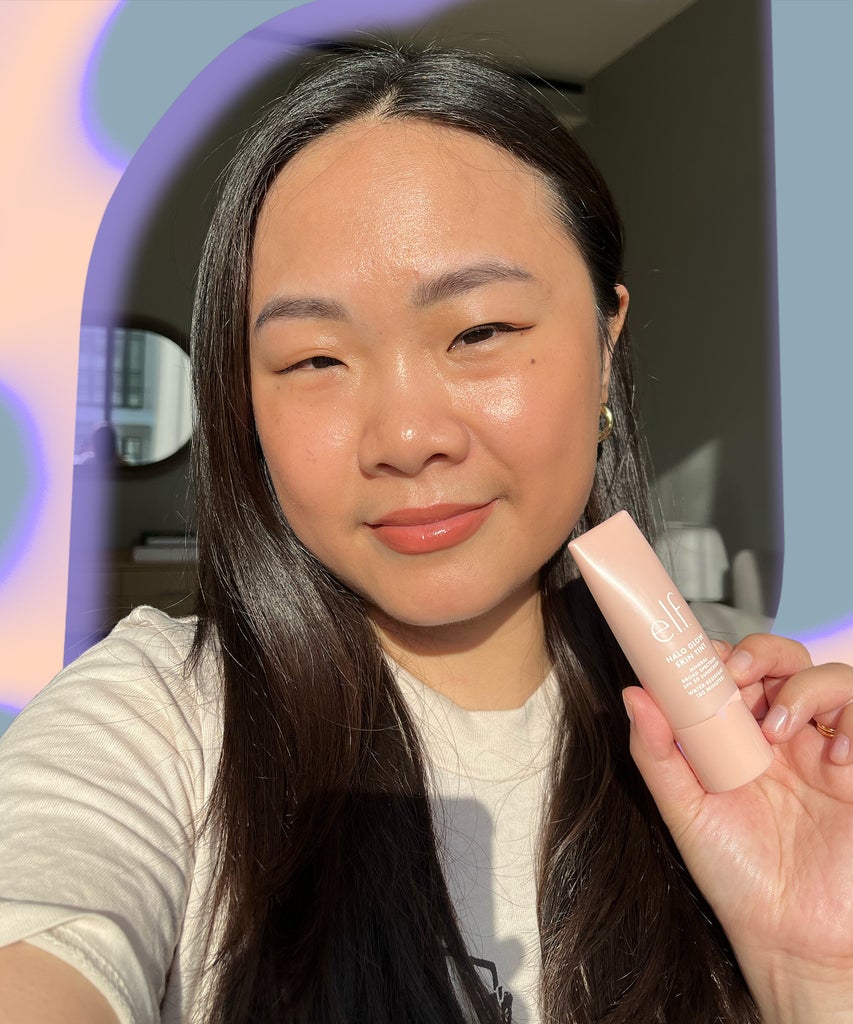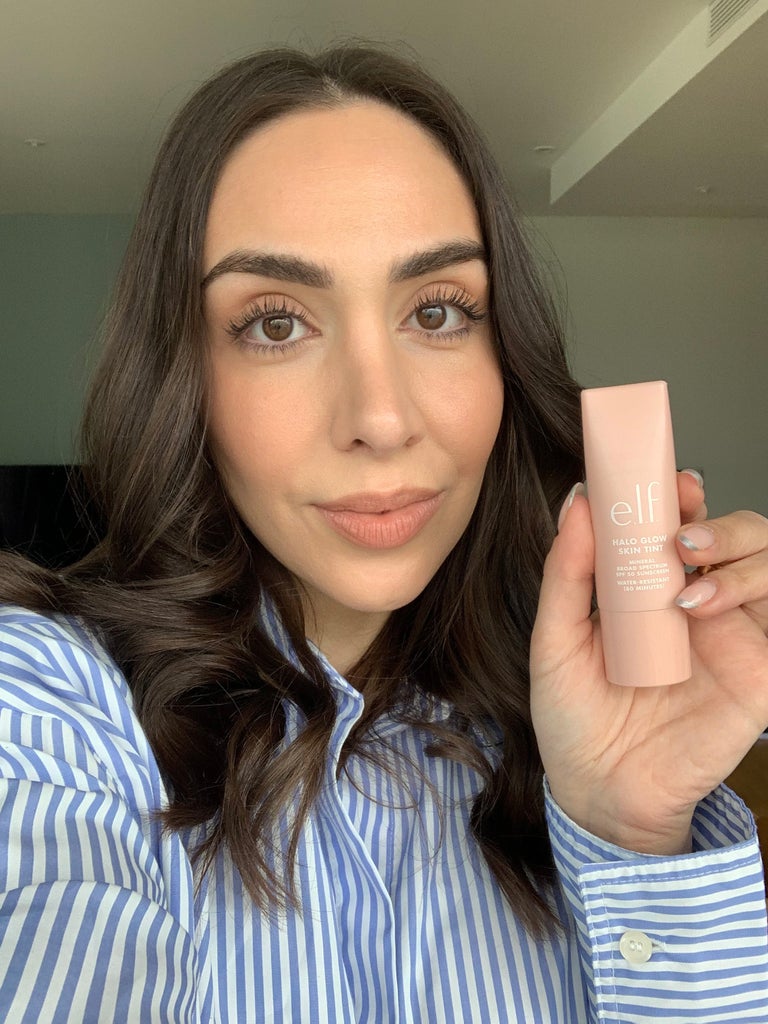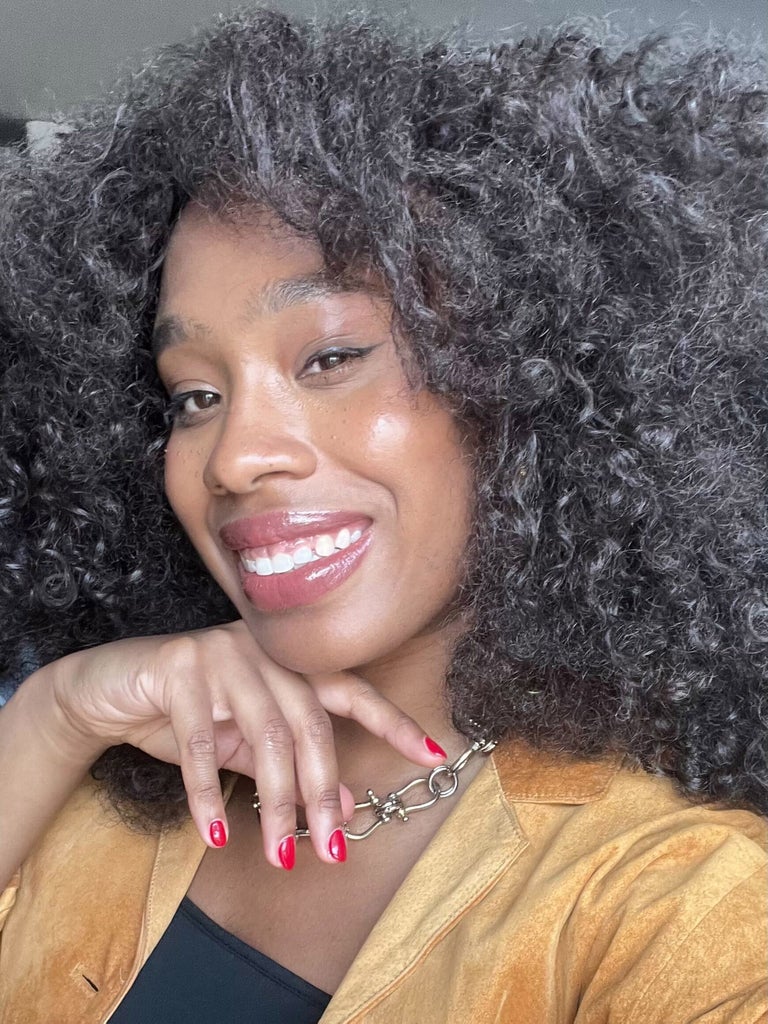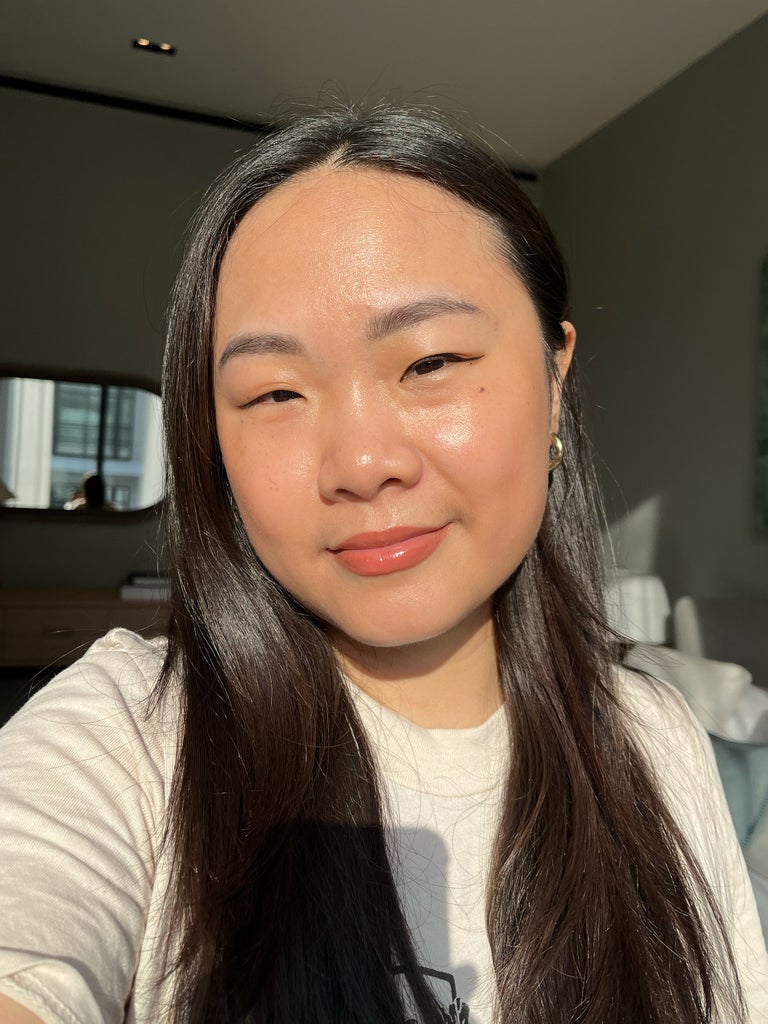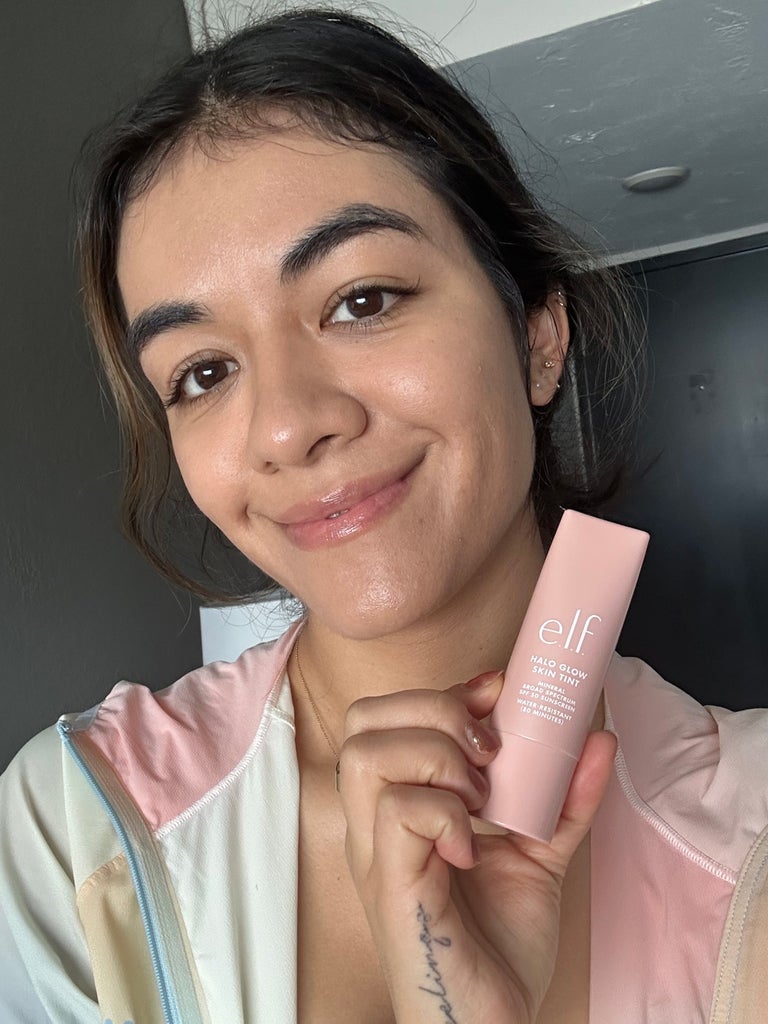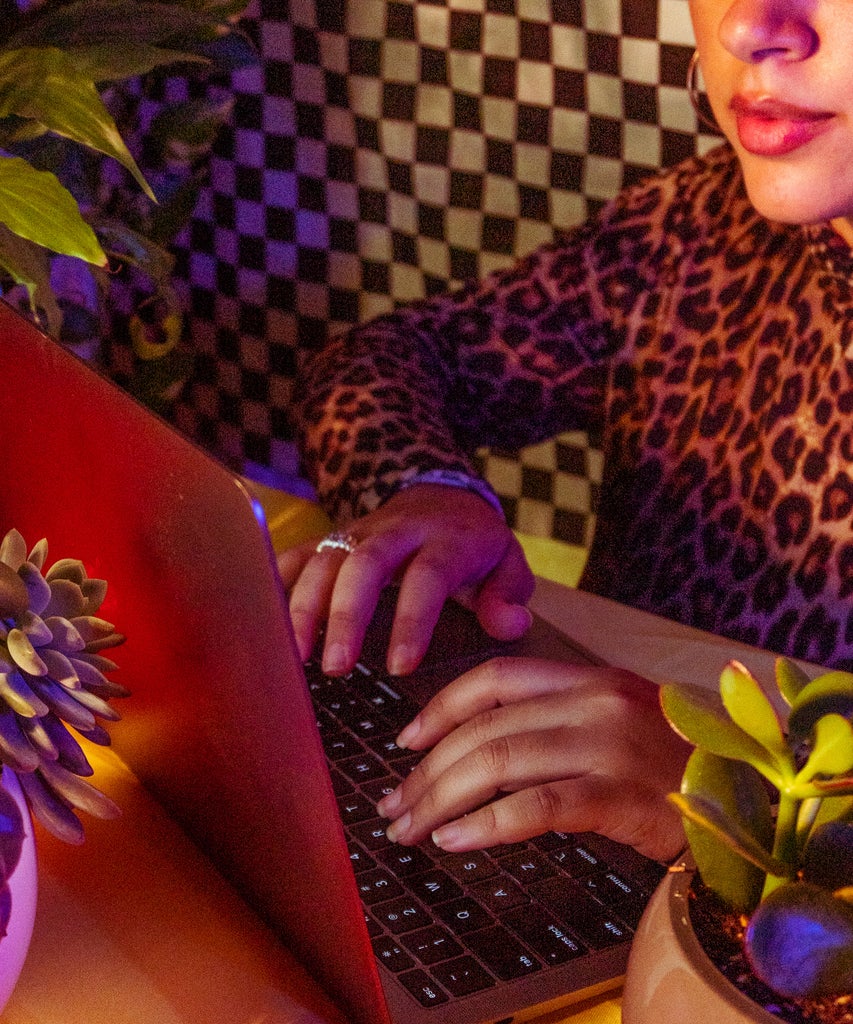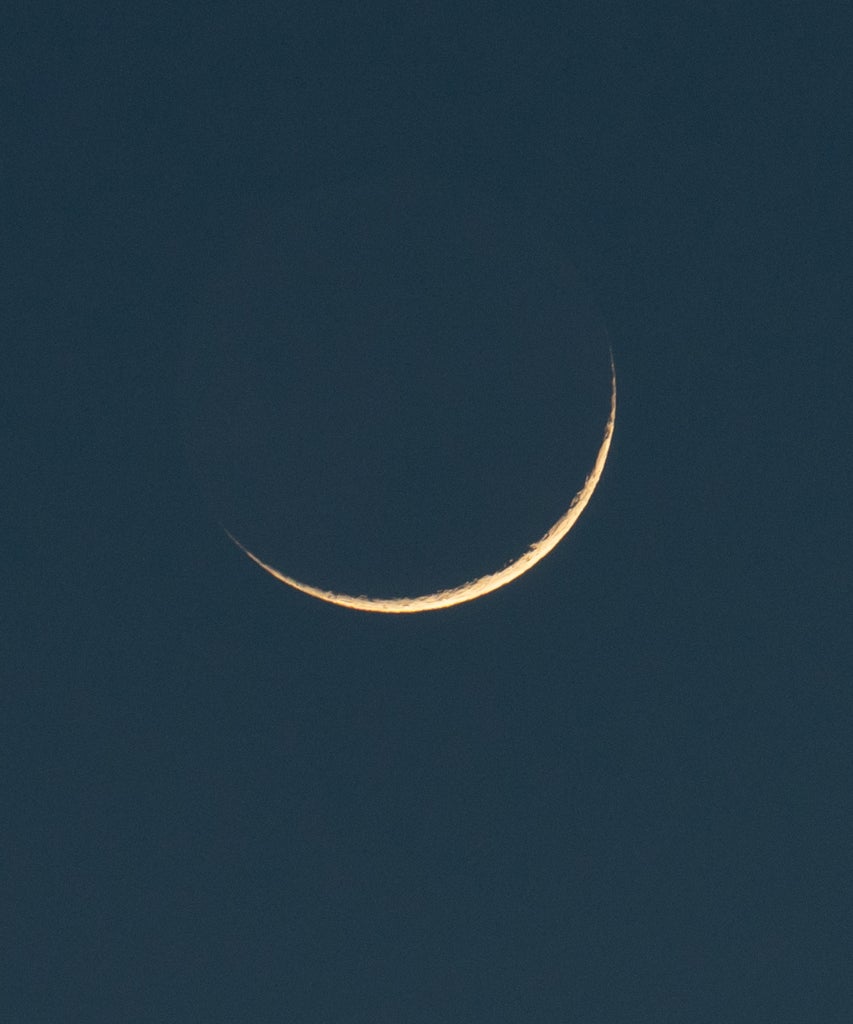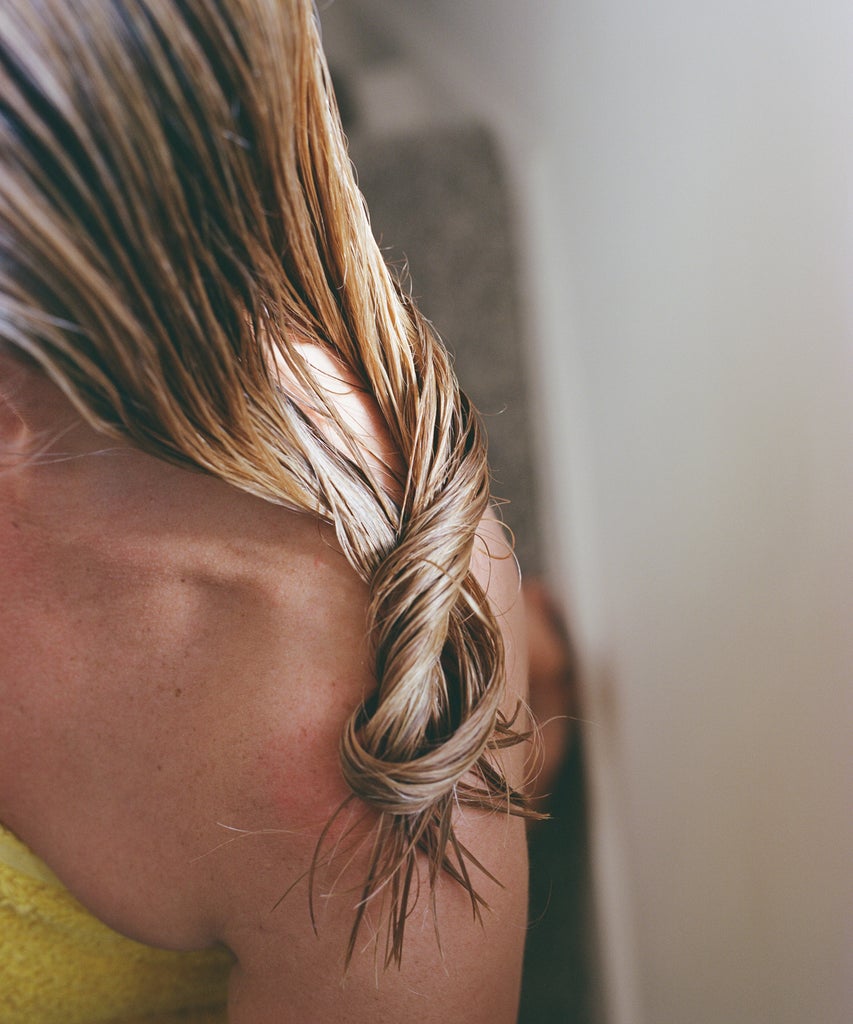

Mold makes an appearance in beauty products more often than we like to admit, whether it’s a brand that has formulated its moisturizer without preservatives (they’re essential for keeping bacteria at bay) or storing your makeup in a hot and steamy bathroom (the optimum environment for microorganisms to thrive in). And while mold can turn up pretty much anywhere, you’d assume that your skin is safe. But that hasn’t stopped TikTok from falling down something of a rabbit hole lately.
Whether you’re a chronic scroller or open the app every once in a while, you might’ve seen this viral video posted by content creator Kaley aka @allthingskaley. An enormous 21.8 million people already have, and the phrase “hair mold” is trending as a result. In the clip, Kaley says that she blow-dries her hair as soon as she gets out of the shower so that she “doesn’t get mold”. At first it caused confusion but then came a handful of comments from people who do the very same. The common school of thought? That air-drying your hair — or going to sleep with wet hair — can encourage mold to grow on your scalp.
@allthingskaley Have you heard of hair mold? I’m actually terrified now 😳 #hairmold #preventhairmold #howtopreventhairmold #whatishairmold ♬ Funny video “Carmen Prelude” Arranging weakness(836530) – yo suzuki(akisai)
As expected, TikTok began to panic. “What does hair mold look like????” asked one commenter. Another wrote, “I have never heard of hair mold until now…I’m also terrified!!!”
Can mold grow in your hair and on your scalp?
In my 10 years of beauty experience, I’ve never come across hair mold. So is it really a thing? And should you be worried? I put the question to a trichologist and a dermatologist with a specialism in hair.
First of all, it pays to understand what mold actually is. Molds are fungi, which feed off moisture. They can be harmful, and people with health issues may be sensitive to certain types. In moist environments, mold can technically grow anywhere, but is air-drying — or sleeping with wet hair — likely to cause it on your scalp or in your hair strands?
“In short, no,” says Dr. Sharon Wong, consultant dermatologist and British Skin Foundation spokesperson. “Mold that you find in the air or on damp walls and surfaces is caused by a variety of different fungal species, and they are not the same as the yeasts that live naturally on human scalps,” she says.
What is malassezia — and how does it affect the scalp?
Before we get into the nitty gritty, it’s important to note that said yeasts are totally normal. A common yeast that lives on our scalp is called malassezia, explains trichologist Eva Proudman FIT IAT. It’s different from mold but, says Dr. Wong, “The combination of damp hair together with the heat emitted from the scalp surface creates the perfect warm, moist environment that encourages overgrowth of malassezia.”
Proudman explains that when the malassezia yeast becomes overactive (usually the result of excess oil on the scalp), it can lead to dandruff and seborrhoeic dermatitis, a type of scalp eczema. So what’s the difference? “Dandruff causes loose white flakes that fall easily onto the shoulders, and in many cases does not itch,” says Proudman. “Seborrhoeic dermatitis causes the flakes to turn yellow as they feed off of oil, and for them to sit on the scalp and within the hair,” she continues. “Seborrhoeic dermatitis is also usually itchy and causes inflammation on the scalp.”
While there is no “cure” for dandruff, washing your hair more frequently — and starting off with an anti-dandruff shampoo like Nizoral Anti-Dandruff Daily Prevent Shampoo, $15.88, or Verb Dandruff Shampoo with Salicylic Acid for Dry and Flaky Scalp, $22 — can help. Regularly washing your hair is also recommended to treat seborrhoeic dermatitis, as it thrives in oily environments.
Can mold grow on your pillow?
While it’s very unlikely that mold can grow on your hair and scalp, your pillows and pillowcases are not exempt, says Proudman. “[These] will absorb moisture and become damp from wet hair, which can lead to the fabrics becoming smelly and developing mold,” she says. If you do sleep with wet hair, Proudman recommends changing your pillowcase daily and ensuring that the pillow is always dry. If you head to bed with dry hair, Dr. Wong suggests changing your pillowcase once a week.
Is it best to air-dry or blow-dry your hair after washing?
Ultimately, whether you blow-dry your hair, let it air-dry or sleep with it wet is entirely down to personal preference, but from a dermatologist’s point of view, it’s best to dry hair thoroughly before going to bed. “Not just for better scalp health,” says Dr. Wong, “but also because your hair is at its weakest when wet and therefore most prone to breakage in this state.” Proudman agrees: “Wet hair can easily be broken, so I always advise to go to sleep with dry hair for both scalp and hair health.”
Depending on your length and hair texture, Dr. Wong considers air-drying to be time-consuming, but it’s also impractical for a lot of people, especially if you wash your hair in the evening. She has a trick for mopping up water, though: “I would advise using a microfibre towel to dry the hair first, as this significantly increases water absorption and therefore [reduces] the time needed for any subsequent air-drying or heat drying.” Try Kitsch Extra Large Quick-Dry Hair Towel Wrap, $26, or the Act+Acre Microfiber Hair Towel, $30, if you have more to spend.
What’s the best hairdryer for no heat damage?
If it’s heat damage that’s preventing you from blow-drying your hair, consider a smart blowdryer like the Shark SpeedStyle Pro FLEX 4-in-1 High-Velocity Hair Dryer System, $179.99. I also love the clever Dyson Supersonic Nural Hairdryer, $499, which uses sensors to tweak both airflow and temperature, minimizing the chance of burning your scalp and protecting hair strands in the process. If you’d rather spend less, try the BaBylissPRO Nano Titanium Compact Folding Ionic Dryer, $84.99, which boasts impressive airflow. And remember: Heat protectant spray exists for a reason.
Lastly, if you’re air-drying your hair, consider a targeted air-dry cream to reduce waiting time. Try JVN Complete Hydrating Air Dry Hair Styling Cream, $28, with smoothing squalane and moringa seed oil. Also try Briogeo Style + Treat Air Dry Hair Styling Cream, $26, with deeply moisturizing shea butter and glycerin, and Curlsmith Weightless Air Dry Cream, $27, with castor and jojoba oil, both of which are perfect for curly hair but can be used on all hair types.
Like what you see? How about some more R29 goodness, right here?
12 Summer Hair Color Trends Everyone Will Ask For
